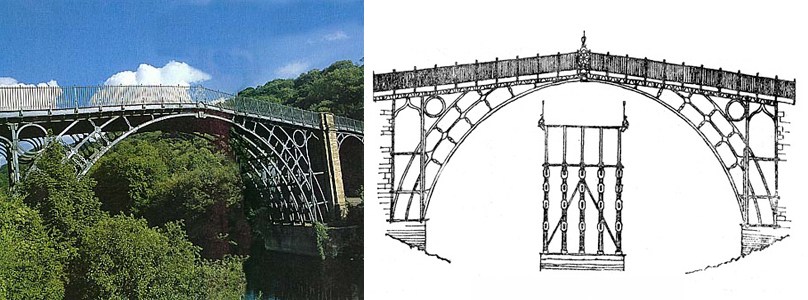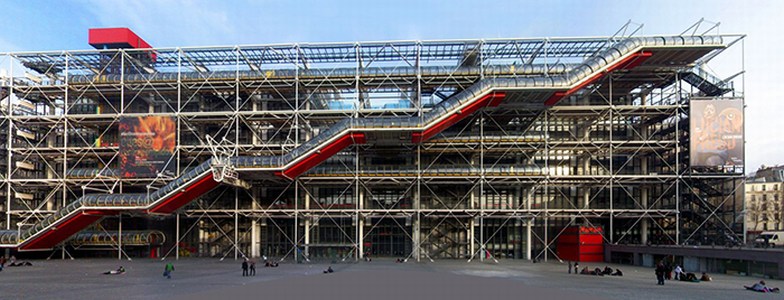As a steel constructions manufacturer, we would like to share with you the history of the development of metal construction.
In Europe, the use of metal in construction began quite a long time ago. In the Middle Ages, they also used wrought iron cross-bracing and stretching, mainly to reinforce stone buildings.
Industrial smelting of cast iron in the second half of the 18th century gave a strong impulse to the development of bridge-building in European countries. In 1779 a cast-iron bridge with a span of 30.6 metres was built in Great Britain over the River Severn.

Steel construction of Severn Bridge
Slightly later, thanks to pudding kilns and rolling mills, chain and cable bridges were built with much longer spans than cast-iron bridges. In 1826, a 176.5-metre long chain bridge over the Menai Strait in Britain was completed. In 1840 a cable bridge with a span of 273 metres was built in Freiburg (Switzerland).
The rapid development of the railway system – even though suspension bridges had not proved very rigid – led to the construction of steel profile bridges. One of these was the tube bridge ‘Britannia’, spanning the Menai Strait by engineer Stephenson.
As in Russia, a technology from bridge-building is gradually being introduced into industrial and public buildings. In 1854, the “Cristal Palace” was built for the World’s Fair in London and the Polonceau truss (span 52m) bridges the railway station in Marseille.
In the second half of the 19th century, the emergence of the Bessemer and open-hearth furnace methods of melting leads to a further stage in the development of steel constructions. With the cantilever girder system, a railway bridge with two spans of 521 metres is built in Britain in 1891. In 1889, the Eiffel Tower (300 metres) is built.
Steel constructions in Europe continued to develop strongly into the 20th century. The Europa Bridge, the EXPO-58 exhibition pavilion, the J. Pompidou Centre, the North Sea oil platforms, are just a few examples of the metal constructions.

The Pompidou Centre
Since the end of the 19th century, two main trends in steel construction have been developing in the United States: high-rise buildings and suspension bridge systems. In 1931 the 381-metre high Empire State Building was built in 15 months. Today, most high-rise buildings are concentrated precisely in the United States – the tallest building, the Sears, is in Chicago (445 metres high).
The Golden Gate Bridge has long been the world’s largest suspension bridge (average span 1280 metres), but recently the Humber Bridge in the UK has pushed it into the background (1410 metres).
Golden Gate Bridge
To summarize, the development of steel constructions industry and civil engineering, both in Russia and around the world, has given rise to a huge variety of metal structures: residential buildings, production halls, communication facilities, oil production platforms, and much more.
Steel today is an indispensable element of load-bearing structures for all kinds of purposes.
Many steel structures have already been made by us over the years.
If you are in need of a reliable steel structure manufacturer, then get in contact with us.
